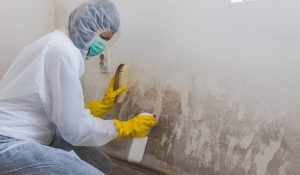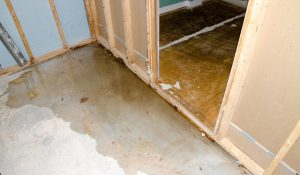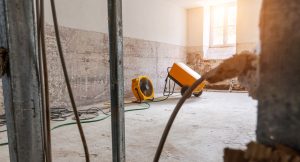
Mould is a common issue in many homes and buildings. It can cause structural damage and pose health risks.
If you’re dealing with a mould problem, you might be considering professional help. But what can you expect from a remediation service?
This article will guide you through the process. It will explain what mould remediation is and how it differs from simple cleaning.
You’ll learn about the benefits of hiring a certified specialist. We’ll also discuss the steps involved in the remediation process.
By the end of this article, you’ll have a clear understanding of what to expect from a certified mould remediation service. Let’s dive in.
Understanding Mould and Its Risks
Mould is a type of fungus that grows in damp environments. It thrives on moisture and can spread quickly.
There are many types of mould, each with its unique characteristics. Some are harmless, while others pose health risks.
Exposure to mould can lead to respiratory problems, allergic reactions, and other health issues. It is especially harmful to individuals with pre-existing conditions.
Beyond health risks, mould can cause significant structural damage. It can weaken walls and rot wooden beams.
Addressing mould issues promptly is essential. Delaying treatment can lead to costly repairs and pose greater health risks.
The Remediation Process
Remediation involves a comprehensive and meticulous approach. It ensures that mould is completely removed and future growth is prevented.
The process starts with identifying the affected areas through a thorough inspection. This allows the remediation team to develop a customised plan for the specific situation.
Next, containment measures are crucial to prevent mould spores from spreading. Professionals use barriers and negative air pressure during this stage.
The actual removal of mould follows. This step involves the careful disposal of contaminated materials.
Certified specialists use advanced equipment to ensure thorough cleaning and disinfection. They aim to eliminate all mould spores present in the environment.
A key step in the process is addressing the moisture issue. Without this, mould is likely to return even after removal.
Post-remediation involves verification that the area is mould-free. Specialists use third-party testing for a precise and unbiased assessment.
This detailed approach ensures the safety and health of building occupants. It addresses both visible mould and hidden threats.
Certified mould specialists follow strict guidelines and safety measures throughout the process. They are trained to handle various types of mould situations.
Choosing certified professionals offers assurance that industry standards are met and maintained. Trust in certified services for a safe home.
Initial Inspection and Assessment
A certified mould specialist begins with a comprehensive inspection. They identify the extent and type of mould present.
This assessment helps in understanding the severity of the situation. It also pinpoints the exact locations affected by mould.
An effective plan is tailored based on this initial evaluation. The aim is to address both current mould and potential future growth.
The inspection phase is crucial for a successful remediation process. It informs every subsequent step professionals take.
Containment and Prevention of Spread
Containment is essential in preventing the spread of mould spores. It involves sealing off affected areas with barriers.
Specialists use negative air pressure to direct mould spores away from clean areas. This technique is highly effective in controlling spread.
The goal is to isolate the mould-infested zones during removal. This minimises the risk of mould returning after remediation.
These precautions ensure the rest of the building remains unaffected. It provides peace of mind for property owners and occupants.
Mould Removal and Disposal
Once contained, the mould removal process begins. Certified specialists carefully remove and dispose of contaminated materials.
They use proper protective gear and follow strict disposal guidelines. This step is essential for safe and effective mould removal.
The focus is on removing all visible and hidden mould. Professionals ensure no mould is left behind to prevent recurrence.
This thorough approach protects both the building and its occupants. Proper disposal is key to a clean and safe environment.
Cleaning and Disinfection
The cleaning and disinfection phase comes next. Specialists use specialised equipment like HEPA vacuums and air scrubbers.
They follow a methodical approach to eliminate all mould spores. The goal is to leave the area safe and spore-free.
Using quality disinfectants, they ensure the highest standards of cleanliness. This step is essential in preventing future mould growth.
Professional cleaning not only removes mould but also enhances indoor air quality. It creates a healthier living or working space.
Addressing the Moisture Source
Addressing the source of moisture is crucial in preventing mould. Without it, mould will likely return.
Specialists identify and rectify the causes of moisture. This might include fixing leaks or improving ventilation.
By eliminating moisture, they make the environment less conducive to mould. This is a key part of sustainable remediation.
Long-term prevention relies on controlling moisture levels. This ensures that properties remain mould-free for longer periods.
Post-Remediation Verification
After remediation, verifying the results is vital. Certified specialists conduct post-remediation assessments.
They may employ third-party testing to verify complete mould removal. This independent verification adds an extra layer of assurance.
The aim is to ensure the space is safe and free of mould. This step confirms the effectiveness of the remediation process.
Final verification provides confidence in the cleanliness and safety of the environment. It is a critical conclusion to the remediation journey.
Benefits of Hiring a Certified Mould Specialist
Hiring a certified mould specialist brings peace of mind. Their expertise ensures the problem is addressed thoroughly and safely.
A certified specialist follows industry standards set by bodies like the IICRC. This adherence guarantees high-quality service.
They possess the right tools and training to handle mould effectively. This results in more efficient and lasting solutions.
Certified professionals not only remove mould but also identify its root causes. Their comprehensive approach prevents future growth.
Working with certified experts enhances property value. A mould-free environment is attractive to buyers and occupants alike.
Choosing the Right Certified Remediation Service
Selecting the right remediation service is crucial for effective treatment. Begin by researching potential companies thoroughly.
Look for certified professionals with verifiable credentials. This ensures adherence to industry standards and quality service.
Assess customer reviews and testimonials. Positive experiences from others can indicate reliable and trustworthy service.
Consider the scope of services offered. A comprehensive approach addressing both current and future mould issues is ideal.
Lastly, evaluate cost estimates and service guarantees. These factors reflect the company’s confidence in their work and its durability.
Certification and Training
Ensure the service is backed by proper certification. This signals formal training and adherence to best practices.
Trained specialists are equipped to handle complex remediation tasks safely. Certification ensures they meet industry standards.
Experience and Reputation
Experience in the field indicates reliability and competence. A seasoned service provider understands the nuances of remediation.
Reputation matters. Check for consistently positive feedback from past clients, ensuring their credibility and trustworthiness.
Transparent Communication and Detailed Plan
Effective communication is a hallmark of quality service. Expect clear explanations about the remediation process and timelines.
A detailed remediation plan is crucial. It provides a roadmap for the work and highlights the thoroughness of the service.
After-Service Support and Warranty
Look for services offering after-care support. This ensures ongoing assistance if issues arise post-treatment.
A warranty on services provided demonstrates confidence. It assures you of their commitment to effective remediation.
Conclusion
Choosing certified remediation ensures quality and peace of mind. Professionals tackle the root causes, enhancing indoor safety.
By selecting the right service, you’re investing in your property’s longevity. Ensure a healthier environment by relying on expert support.



